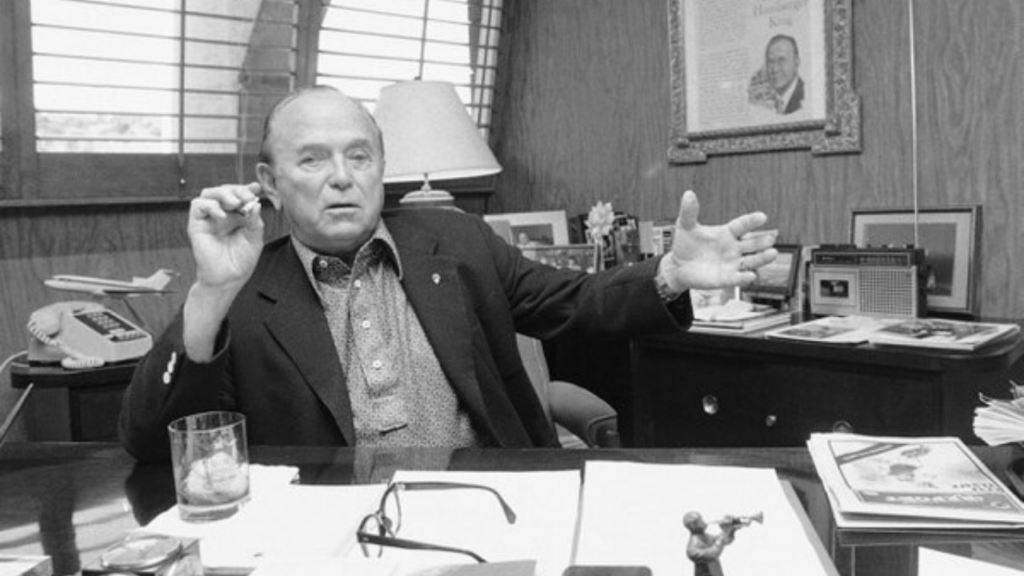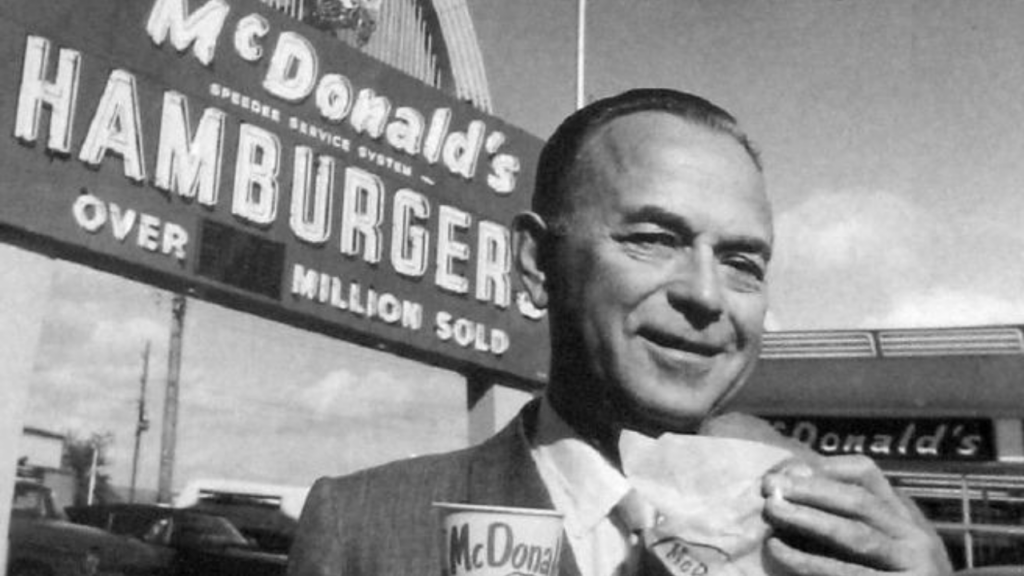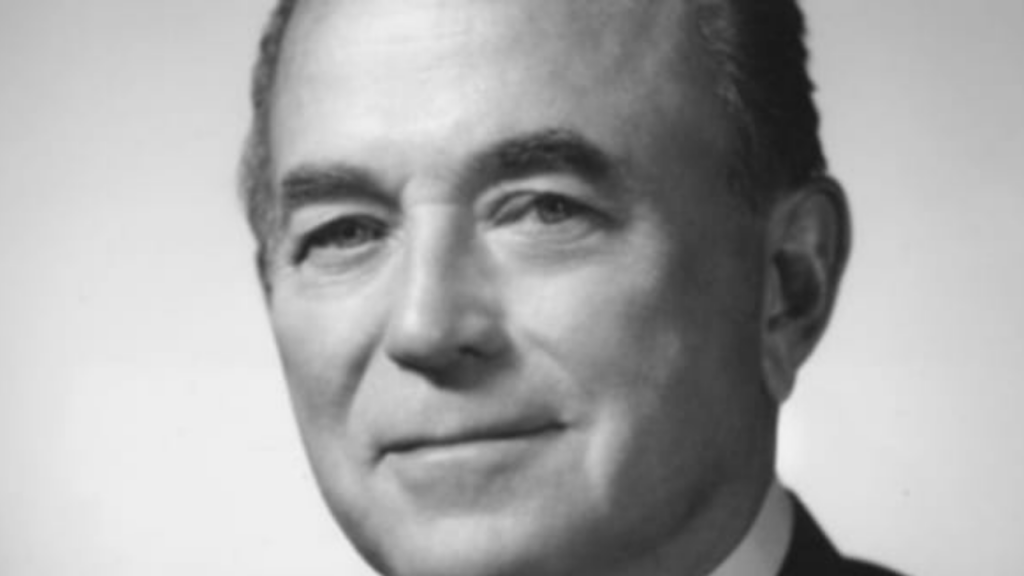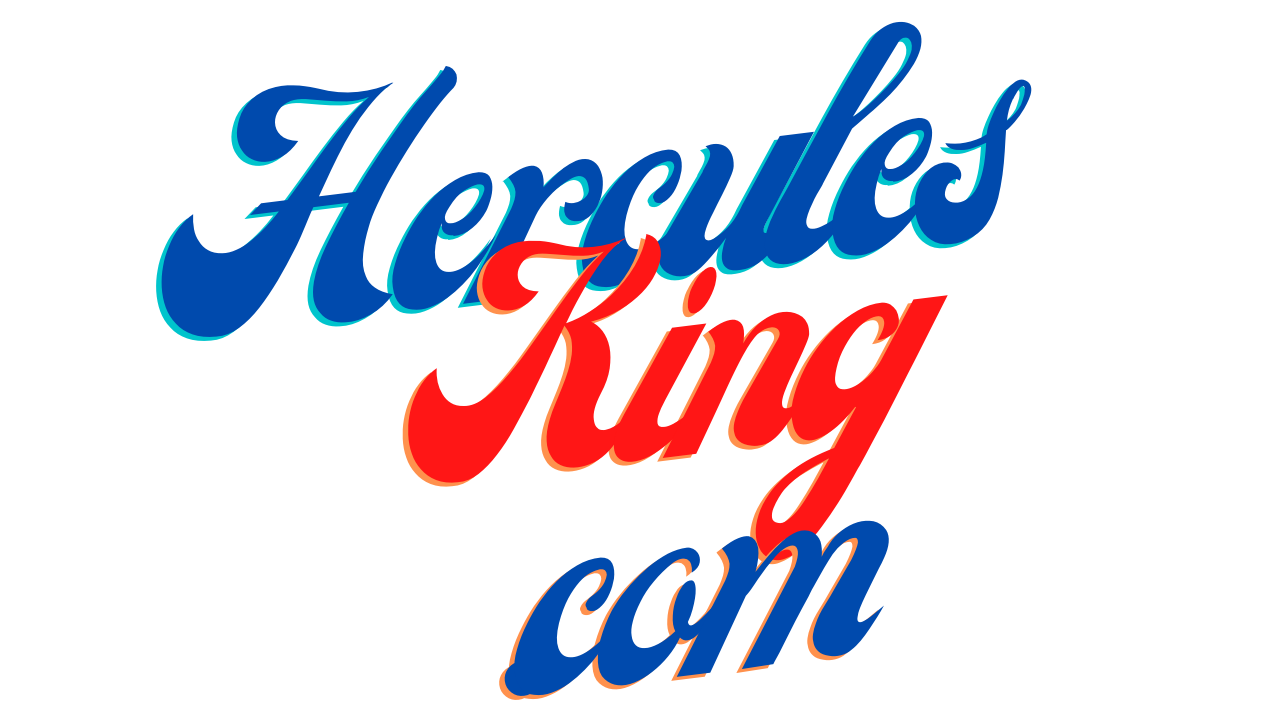
Ray Kroc!
Raymond Albert Kroc (October 5, 1902 – January 14, 1984) was an American businessman.[4][5] He joined the California company McDonald’s in 1954, after the McDonald brothers had franchised nine locations out from their original 1948 operation in San Bernardino. This set the stage for national expansion with the help of Kroc, eventually leading to a global franchise, making it the most successful fast food corporation in the world. Kroc was included in Time 100: The Most Important People of the Century, and amassed a multi-million dollar fortune during his lifetime. He owned the San Diego Padres baseball team from 1974 until his death in 1984.
Kroc was born on October 5, 1902 in Oak Park, Illinois, near Chicago, to Czech-American parents, Rose Mary [née Hrach] (1881–1959) and Alois “Louis” Kroc (1879–1937).[6][7] Alois was born in Horní Stupno [cs], part of Břasy near Rokycany.[8] Rose’s father Vojtěch was from Ševětín and her maternal grandfather Josef Kotilínek was from Bořice.[9][10] After immigrating to America, Alois made a fortune speculating on land during the 1920s, only to lose everything with the stock market crash in 1929.[11] In the end, he worked as a superintendent.

Ray Kroc grew up and spent most of his life in Oak Park. During World War I, he lied about his age and became a Red Cross ambulance driver at the age of 15 years old, unknowingly alongside Walt Disney.[12] The war, however, ended shortly after he enlisted. During the Great Depression, Kroc worked a variety of jobs selling paper cups, as a real estate agent in Florida, and sometimes playing the piano in bands.[13]
Ray Kroc’s first (McDonald’s ninth) restaurant, which opened April 1955 in Des Plaines, Illinois, U.S.
After World War II, Kroc found employment as a milkshake mixer salesman for the foodservice equipment manufacturer Prince Castle.[14] When Prince Castle Multi-Mixer sales plummeted because of competition from lower-priced Hamilton Beach products, Kroc was impressed by Richard and Maurice McDonald who had purchased eight of his Multi-Mixers for their San Bernardino, California restaurant, and visited them in 1954.
In 1955, Kroc opened the first McDonald’s franchised under his partnership with the McDonald brothers in Des Plaines, Illinois. The restaurant was demolished in 1985. Recognizing its historic and nostalgic value, in 1990 the McDonald’s Corporation acquired the stand and rehabilitated it to a modern but nearly original condition, and then built an adjacent museum and gift shop to commemorate the site called McDonald’s#1 Store Museum. The museum closed in 2018.

After finalizing the franchise agreement with the McDonald brothers, Kroc sent a letter to Walt Disney. They had met as ambulance attendant trainees at Old Greenwich, Connecticut during World War I. Kroc wrote, “I have very recently taken over the national franchise of the McDonald’s system. I would like to inquire if there may be an opportunity for a McDonald’s in your Disney Development”. According to one account, Disney agreed under stipulation to increase fries from ten cents to fifteen cents, allowing himself the profit. Kroc refused to gouge his loyal customers, leaving Disneyland to open without a McDonald’s restaurant. Writer Eric Schlosser, writing in his book Fast Food Nation, believes that this is a doctored retelling of the transaction by some McDonald’s marketing executives. Most probably, the proposal was returned without approval.[15]
Kroc has been credited with making a number of innovative changes in the food-service franchise model. Chief among them was the sale of only single-store franchises instead of selling larger, territorial franchises which was common in the industry at the time. Kroc recognized that the sale of exclusive licenses for large markets was the quickest way for a franchisor to make money, but he also saw in the practice a loss in the franchisor’s ability to exert control over the course and direction of a chain’s development. Above all else, and in keeping with contractual obligations with the McDonald brothers, Kroc wanted uniformity in service and quality among all of the McDonald’s locations. Without the ability to influence franchisees, Kroc knew that it would be difficult to achieve that goal. By granting a franchisee the right to only one store location at a time, Kroc retained for the franchise some measure of control over the franchisee (or at least those desiring to someday own the rights to another store).[16]

Kroc’s policies for McDonald’s included establishing locations only in suburban areas, not in downtowns since poor people might eat in them after the main business hours were over. Restaurants were to be kept properly sanitized at all times, and the staff must be clean, properly groomed and polite to children. The food was to be of a strictly fixed, standardized content and restaurants were not allowed to deviate from specifications in any way. There was to be no waste of anything, Kroc insisted; every condiment container was to be scraped completely clean. No cigarette machines or pinball games were allowed in any McDonald’s.[17]
During the 1960s, a wave of new fast food chains appeared that copied McDonald’s model, including Burger King, Burger Chef, Arby’s, KFC, and Hardee’s. Kroc became frustrated with the McDonald brothers’ desire to maintain a small number of restaurants. The brothers also consistently told Kroc he could not make changes to things such as the original blueprint (building codes were different in Illinois than in California), but despite Kroc’s pleas, the brothers never sent any formal letters that legally allowed the changes in the chain. In 1961, he bought the company for $2.7 million, calculated so as to ensure each brother received $1 million after taxes. Obtaining the funds for the buyout was difficult due to existing debt from expansion. However, Harry Sonneborn, whom Kroc referred to as his “financial wizard”, was able to raise the required funds.[18]

At the closing table, Kroc became annoyed that the brothers would not transfer to him the real estate and rights to the original San Bernardino location. The brothers had told Kroc they were giving the operation, property and all, to the founding employees. In his anger, Kroc later opened a new McDonald’s restaurant near the original McDonald’s, which had been renamed “The Big M” because the brothers had neglected to retain rights to the name. “The Big M” closed six years later.[19] It is alleged that as part of the buyout Kroc promised, based on a handshake agreement, to continue the annual 1% royalty of the original agreement, but there is no evidence of this beyond a claim by a nephew of the McDonald brothers. Neither of the brothers publicly expressed disappointment over the deal. Speaking to someone about the buyout, Richard McDonald reportedly said that he had no regrets.[20]
Kroc maintained the assembly line “Speedee Service System” for hamburger preparation that was introduced by the McDonald brothers in 1948. He standardized operations, ensuring every burger would taste the same in every restaurant. He set strict rules for franchisees on how the food was to be made, portion sizes, cooking methods and times, and packaging. Kroc also rejected cost-cutting measures like using soybean filler in the hamburger patties. These strict rules also were applied to customer service standards with such mandates that money be refunded to clients whose orders were not correct or to customers who had to wait more than five minutes for their food.
By the time of Kroc’s death, the chain had 7,500 outlets in the United States and 31 other countries and territories.[21] The total system-wide sales of its restaurants were more than $8 billion in 1983, and his personal fortune amounted to some $600 million.[4]


[url=http://cheapdrugs.store/#]ed pills that work quickly[/url]
super cialis best price cheapest cialis usa which is better cialis or levitra
does cialis lose effectiveness over time cialis 20mg ???? cialis samples
does ivermectin kill bacteria trial site news ivermectin stromectol drug
how does cialis help bph cialis usa prescription generi cialis
buy erection pills best drugs for ed over the counter erectile dysfunction pills
prednisone prescription drug prednisone for sale generic prednisone online
legal to buy prescription drugs from canada tadalafil without a doctor’s prescription canadian pharmacy online
ivermectin pills ivermectin dose for head lice how to use ivermectin for humans
how much ivermectin to give a dog with sarcoptic mange ivermectin budgies ivermectin pills for scabies
prescription drugs without doctor approval canadian drugs online online canadian drugstore
propecia 5mga can you get propecia without a prescription buy propecia online uk
where can i get ivermectin for guinea pig scaly leg mite treatment ivermectin ivermectin oral
men’s ed pills top ed pills medicine for erectile
generic drugs india order online india pharmacies shipping to usa buy prescription online from india
buy stromectol online stromectol price usa stromectol 12 mg tablets
stromectol for sale stromectol for sale stromectol without a doctor prescription
stromectol for humans for sale stromectol without a doctor prescription stromectol for humans for sale
buy tadalafil online cialis pharmacy tadalafil tablets 20 mg india
stromectol for sale stromectol stromectol 12 mg tablets
provigil 100mg generic buy provigil 100mg pill
modafinil 200mg without prescription buy provigil 200mg for sale
sildenafil viagra tablets for men sildenafil citrate tablets 100 mg
online purchase of tadalafil in india cialis pills where to buy liquid cialis
cheap provigil 200mg provigil 100mg tablet
stromectol for humans for sale ivermectin 400 mg egg withdrawal ivermectin
stromectol tablets for humans stromectol 12 mg tablets stromectol tablets for humans